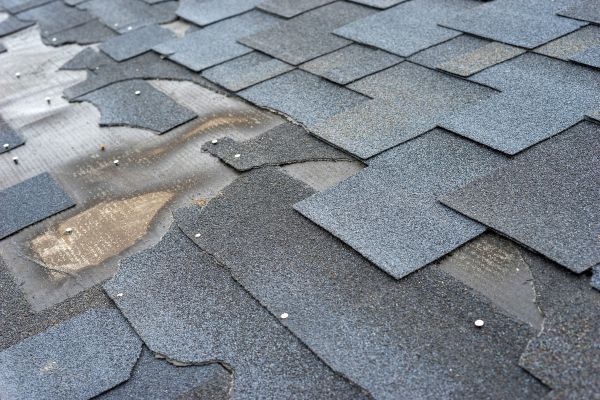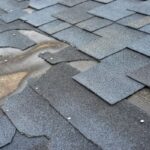I’ve been up and down enough roofs around Luton to spot the common problems that crop up here. The mix of Victorian terraces, post-war semis, and newer builds all have their own typical issues, and knowing what to look for can save a fortune in repairs if you catch things early. Most people only think about their roof when it’s already leaking, but there are usually warning signs well before it gets to that point.
Storm Damage After Luton Weather
Luton gets its fair share of wind, and the roofs on exposed properties near the Chiltern Hills particularly take a battering. After any decent storm, it’s worth having a look at your roof from ground level with binoculars if you can’t safely get up there.
Missing or slipped tiles are obvious signs of wind damage. Once one tile goes, others often follow because the wind gets underneath and lifts more. I’ve seen entire sections of roof stripped after storms where the initial damage wasn’t dealt with promptly.
Debris from trees is another issue around residential areas with mature landscaping. Branches can damage tiles directly or build up in valleys and gutters, causing blockages that lead to water problems.
Age-Related Issues on Older Properties
Luton has plenty of older terraced housing where roofs are original or haven’t been touched in decades. Clay tiles from Victorian builds can last a century or more, but the fixings, battens, and felt underneath don’t.
Nail sickness is common on old roofs where the original iron nails have rusted away. Tiles start slipping because nothing’s holding them properly anymore. You’ll notice gaps appearing or tiles sitting at odd angles.
The felt or sarking underneath tiles deteriorates over time. On properties approaching a hundred years old, this secondary weatherproofing layer has often completely failed. Any water getting past tiles then has direct access to the roof space.
Flat Roof Problems on Extensions
Loads of Luton properties have single-storey rear extensions with flat roofs, and these cause more problems than anything else. Traditional felt flat roofs were only ever meant to last fifteen to twenty years, but plenty are still there decades later because nobody wants to spend the money replacing them.
Ponding water is the giveaway that a flat roof is failing. The surface should have enough fall to drain properly, but settlement and deterioration lead to low spots where water sits. That constant moisture breaks down the waterproofing, and leaks inevitably follow.
Blisters, cracks, and tears in the surface all indicate the roof’s past its best. Small repairs might buy a year or two, but once a flat roof starts showing multiple problems, replacement is the only sensible option.
Lead Flashing Around Chimneys
Victorian and Edwardian properties around Luton often still have original chimneys, and the lead flashing around them needs attention eventually. Lead lasts decades but not forever, and poor repairs from previous bodge jobs make things worse.
Flashing pulls away from brickwork as mortar deteriorates, or the lead itself splits and cracks. Water then runs down inside the chimney stack or into the roof void, causing damp problems that might not show up for months.
Properly replacing lead flashing isn’t cheap, but it’s cheaper than dealing with the water damage that results from ignoring failed flashing for years.
Gutter and Downpipe Issues
Blocked gutters might not seem like a roofing problem, but they cause serious issues if left. Water overflows, runs down walls, and finds its way into the building through any weakness in pointing or around window frames.
The residential streets with lots of trees see gutters fill up with leaves every autumn. If they’re not cleared, that debris sits there blocking drainage all winter when rainfall is heaviest.
Damaged or poorly fitted gutters are common on older properties where plastic replacements have been fitted badly. Sections sag, joints leak, or brackets fail, meaning water doesn’t get channeled away properly.
Moss Growth on North-Facing Slopes
Roofs that don’t get much direct sun, particularly those on north-facing slopes or shaded by trees, accumulate moss and algae. A light covering isn’t immediately problematic, but heavy moss buildup lifts tiles, blocks drainage channels between tiles, and holds moisture against the roof surface.
Some people think pressure washing is the answer, but done badly this damages tiles and strips protective coatings. Proper moss treatment and careful removal work better long term.
Knowing When to Act
Small issues like a couple of slipped tiles can usually wait until you’re getting other work done, but anything that’s actively letting water in needs sorting immediately. Water damage escalates fast once it gets into roof spaces and starts affecting timbers and ceilings.
If you’re seeing damp patches on upstairs ceilings, finding puddles in the loft after rain, or noticing daylight through gaps in the roof, those need addressing now rather than next month.
For anyone concerned about their roof’s condition, it makes sense to get a roofing quote from someone who can properly assess what needs doing. A decent roofer will tell you honestly whether you need urgent repairs, can wait a while, or are looking at a full replacement.
The Cost of Waiting
I’ve lost count of properties where homeowners ignored obvious warning signs for years, then ended up with far more extensive and expensive problems. A few hundred quid spent replacing damaged tiles or repointing ridges could have prevented thousands spent on water damage repairs, new joists, and replastering ceilings.
Roofs don’t fix themselves, and problems only get worse with time. Catching issues early when they’re still manageable makes both practical and financial sense.
Regular Maintenance Matters
Having gutters cleared annually, getting a professional inspection every few years, and dealing with minor damage promptly all extend roof lifespan significantly. The properties with roofs in best condition are the ones where owners stay on top of maintenance rather than ignoring everything until disaster strikes.
For Luton properties, particularly older ones or those with flat roof extensions, being proactive about roof maintenance prevents the kind of expensive surprises nobody wants. Your roof takes everything the weather throws at it year after year. Looking after it properly means it’ll keep doing that job without causing grief.




